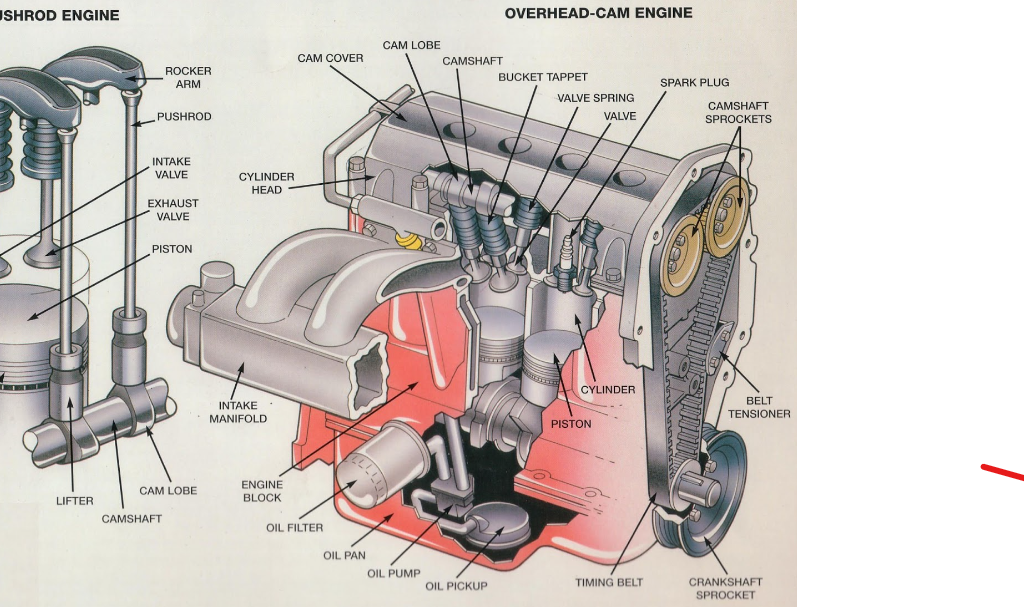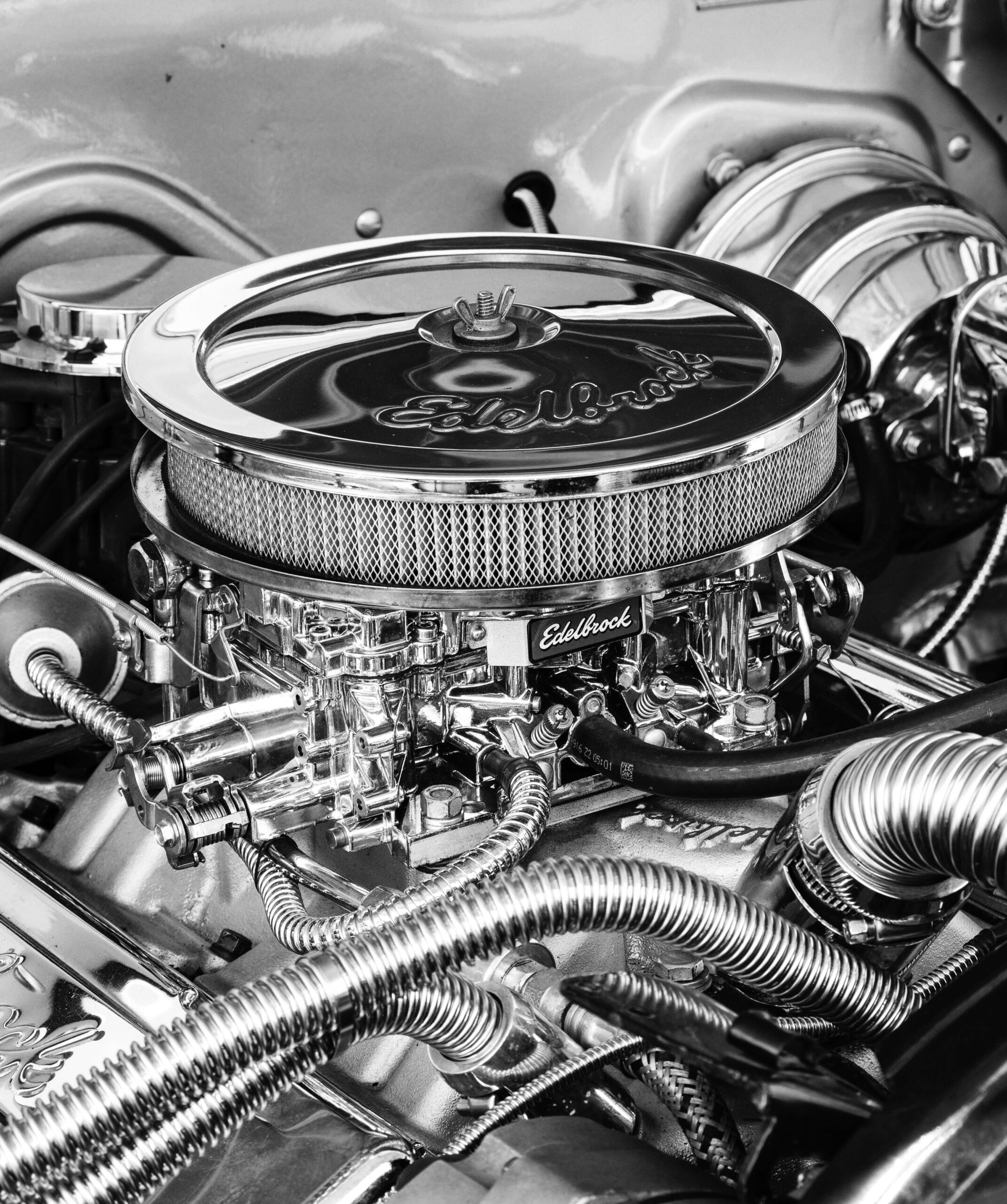The evolution of car engines runs parallel with the development of car models and designs. Simply put, it has quite a bit of history, too. Modern car engines are complicated and designed to meet various customers’ needs.
A few people prefer more power, while others focus only on fuel efficiency. To satisfy the needs of every customer, car manufacturers have devised several different Types of Car Engines over the decades.
15 Different Types of Car Engines
We will explain each type of 15 Different Types of Car Engines available in the market.
Diesel Engines
The diesel engine, named after its inventor Rudolf Diesel, is a form of the internal combustion engine that has carved out its own niche in the world of automotive power.
Gasoline engines use spark plugs to ignite the fuel-air mixture while diesel engines operate on the principle of compression ignition.
They first compress the air in the cylinder, raise its temperature, and then inject diesel fuel into the cylinder, where it ignites due to the high temperature of the air.
Diesel car engines are renowned for their efficiency and durability. They tend to have a higher thermal efficiency than gasoline engines, which means they extract more energy from a given amount of fuel.
This makes them appropriate for heavy-duty applications such as trucks, buses, and industrial machinery.
Petrol Car Engines
The petrol engine uses petrol for its running. Petrol or gasoline is a hydrocarbon, made up of hydrogen and carbon. A device sucks the air-petrol mixture into the cylinder.
The mixture is compressed during the compression stroke, lit during the power stroke, and the exhaust gases are pushed out during the exhaustion. A spark plug is fitted at the top of the cylinder, which gives a spark to ignite the mixture.
Electric Motor Engine
Unlike traditional ICE-powered cars, electric cars get power from pre-installed rechargeable batteries. Not only do these batteries power the engine, but also other electrical equipment.
Electric motors convert electrical energy into mechanical energy. They are more effective than traditional ICE in converting stored energy. They also have higher onboard efficiency than diesel car engines. Most electric cars either use lithium-ion or lead-acid batteries.
Even though electric cars became somewhat popular in the late 20th century, the first-ever electric car was produced in the late 1880s.
Since 2008, due to concerns about rising greenhouse gases and fuel prices, electric vehicles have experienced great growth, especially in developed countries like the USA, Canada, and the UK.
Radial Type Car Engines
Unlike other Types of Car Engines, The radial type engine has a circular cylinder setting. This engine was quite popular among aircraft during the world war, however, as the demand for power increased and with the gas turbines being launched, the radial type engines have become less popular.
This type of engine is shorter as well as it produces fewer vibrations as compared to engines with cylinders arranged in a row.
Internal Combustion Engine
An internal combustion engine (ICE) is a type of heat engine where the combustion of fuel takes place inside the chamber. When the fuel burns inside the engine, it causes the temperature and pressure to increase. This high pressure from combustion is then applied directly to power pistons, rotors, or a nozzle.
It’s the force that moves your car over a distance, transforming chemical energy into useful mechanical energy. These car engines are generally used in automobile industries to power cars. An internal combustion engine can be categorized on many bases, for instance, type of ignition, number of strokes, design, and so on.
A heat engine can also be distinguished as an External Combustion Engine, where the combustion of fuel takes place in an external source. However, we will not elaborate on external combustion engine since it is not used in cars.

Compression Ignition Engine
In a compression ignition engine, high temperatures lead to fuel combustion in the chamber. Also, achieved by gas or air due to compression. Diesel engines are a perfect example of a compression ignition engine since they work only by compressing the air.
A diesel engine has numerous advantages over other internal combustion engines. Higher thermodynamic efficiency and reduced parasitic load on the engine are just a few of those.
Homogeneous Charge Compression Engine
Homogeneous charge compression engine, is a revolutionary step towards minimizing emissions and maximizing fuel efficiency. The HCCI technology combines the characteristics of conventional gasoline engines and diesel engines to produce a hybrid solution.
Although its lesser core temperature (while burning fuel) causes a negligible amount of Nitrogen oxide emissions, it leads to incomplete burning of fuel, which results in relatively high carbon monoxide and hydrocarbon emissions. As of today, no HCCI engines are produced commercially. However, we have several functioning HCCI prototypes.
One such prototype is Mazda’s Skyactiv-G Generation 2, which utilizes the HCCI combustion to achieve a compression ratio of 18:1. The company considers it a major breakthrough in engine technology
Twin-Cylinder Engine
Twin-cylinder car engines, also known as two-cylinder engines, are a type of internal combustion engine with two cylinders. These engines can be configured in several ways, including inline, where the cylinders are arranged in a line, or V-twin, where the cylinders form a ‘V’ shape.
Twin-cylinder engines are known for their compact size and simplicity, making them popular for small cars, motorcycles, and other light vehicles. Despite their small size, twin-cylinder engines can deliver a surprising amount of power, especially when turbocharged or supercharged.
One of the key advantages of twin-cylinder engines is their fuel efficiency. With fewer cylinders, these engines typically consume less fuel than their larger counterparts, making them a more economical choice. They also tend to be lighter, which can improve vehicle handling and performance.
However, twin-cylinder engines can be less smooth than engines with more cylinders due to their inherent imbalance. However, they remain a popular choice for their combination of simplicity, compactness, and efficiency, particularly in applications where space and fuel economy are paramount.
OPOC Engine
One among different Types of Car Engines is the OPOC engine. It consists of two cylinders with a piston at both ends. There is no cylinder head and, thus, no valves. Compared to conventional engines, the opposed cylinder opposed-piston engine has very low bearing loads, meaning there will be less friction. And since it is quite small in size, it has a high power-to-weight ratio.
Oil Cooled Engine
The oil-cooled engine makes use of the engine oil to dissipate the heat. This type of cooling is better than the air-cooled engine type.
These types of car engines have fins like the air-cooled ones but along with it, the engine oil is also cooled. When the engine is running, the engine oil lubricates the moving parts as well as absorbs the heat
Now this heated oil is then passed to an oil cooler placed outside the engine. The oil cooler is similar to the radiator within which the hot oil coming from the engine is cooled. The cooled oil is then further circulated through the engine.

Super Charger Car Engines
The function of the supercharger is to compress & increase the density of the air before it enters the engine for combustion.
The supercharger is a type of air compressor that may be either of Centrifugal, Roots-type or a Twin-screw type.
The increased density of air supplied by the supercharger results in increases amount of air available in the combustion chamber.
The more the amount of air in the cylinder, the more fuel can be added and the more powerful explosion can be obtained resulting in increased horsepower.
Superchargers help increase the horsepower as well as the torque developed by the engine to quite some extent.
As the R.P.M of the compressor increases, the temperature of the air exiting the supercharger also increases. This hot air is not desired. Thus it needs to be cooled. Therefore, in between the supercharger and the engine, an intercooler is placed in order to cool the air and increase its density even more.
Advantages of using a Supercharger
- Supercharging gives a high power output
- It increases the mechanical efficiency of the engine.
- Complete and smooth combustion is possible.
Boxer Engine
Unlike the V-type engine, the boxer engine has the cylinders placed flat i.e the cylinder banks are placed 180 degrees apart. So instead of moving up and down as in V & W Type engine, the pistons in the boxer engine reciprocate left and right horizontally.
These car engines are naturally more balanced and are easier to cool than V or W engine type arrangements.
The advantages of boxer engine include:
- The boxer engine has a low center of gravity which increases stability & handling.
- Boxer engines are evenly balanced.
- They are wider and flatter that helps in spreading the weight of the engine more evenly.
- These engines have a smooth operation along with reduced vibrations.
The Boxer engine is sometimes called the “Flat engine” or the “Horizontally opposed engine“.
The Porsche 911 is one of the famous cars using a Boxer-type engine. Other popular manufacturers of the boxer engine include Subaru and Toyota.
Wankel Car Engines
The Wankel engine is also known as a rotor engine because it uses an eccentric rotary system (instead of a piston) to convert pressure into rotating motion. It is simpler, smoother, and much more compact compared to its more popular competitor, the reciprocating or piston engine.
Even though it is mechanically better than pistons, Wankel engines are not typically used in the auto industry. They are not efficient and suffer from poor fuel efficiency and emissions problems.
Since Wankel car engines produce more power pulses per revolution compared to two-stroke and four-stroke engines, they are generally used in racing cars. One of the most popular examples is Mazda’s RX-8.
V Engine
The V engine, named for its unique formation, is a common type of internal combustion engine where the cylinders and pistons align in two separate planes or ‘banks,’ forming a V-like configuration when viewed from the end.
This design balances a flat engine’s compactness and an inline engine’s power density. V engines are renowned for their compact size relative to their number of cylinders.
Their compactness makes them a popular choice for high-performance and luxury vehicles, where space is at a premium, but power cannot be compromised. The most common types of V engines are the V6 and V8, although configurations from V2 to V16 exist.
Eight+ Cylinder Engines
Engines with eight or more cylinders, often in a V configuration, are typically found in high-performance and luxury vehicles.
These engines provide high power and smoothness, making them ideal for vehicles that require superior performance or a refined driving experience.
V8 engines are particularly popular, known for their distinctive sound and power. However, engines with more than eight cylinders, such as V10 or V12 engines, are also used in some luxury sedans and supercars.
These engines consume more fuel and are more complex but deliver unrivaled power and smoothness.
Conclusion: Types of Car Engines
There are many different types of car engines, each with its own unique characteristics and features. Whether you are looking for performance, efficiency, or a combination of the two, there is an engine type out there that will meet your needs.
Like other parts of your vehicle, the car engine needs proper care and can get damaged for several reasons, so take proper care of it.
Also Read: What Makes A Strong Car Engine?

[…] down to what makes a strong car engine? There are no hard and fast rules but it comes down to clever engineering to allow an engine to […]